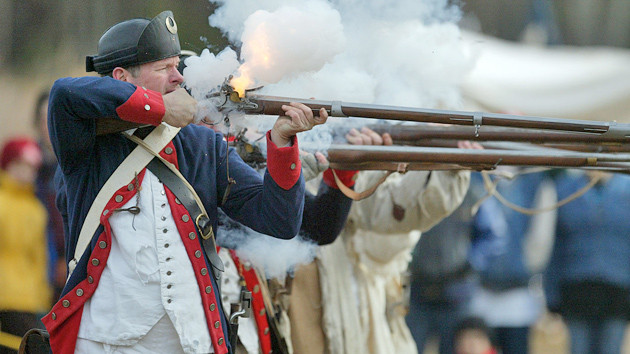
Accuracy
Anyone that shoots often, understands that accuracy is about consistency. A consistent rifle is a good shooting rifle. Creating consistency starts with understanding barrel harmonics. Barrel harmonics refers to the vibrations generated throughout the barrel every time you shoot your rifle.

When you pull the trigger, you are executing a controlled explosion that launches a projectile. The explosion creates vibrations that affect anything connected to it. It’s your job to find ways to deal with this vibration and turn it into an advantage. Taming barrel harmonics means increasing accuracy. You can find out more about barrel harmonics by searching on the web. Its a fascinating subject all on its own.
Things to Consider
1. Barrel: If you can only afford to splurge on one thing, make it your barrel! Each barrel is different and has characteristics that will make it average, better or a flat out tack driver. The amount of vibration is proportional to the length and thickness of the barrel. A heavier barrel helps you control barrel vibration by keeping the harmonic waves smaller. Thinner barrels create a larger harmonic wave and might require some fine-tuning by finding an optimal load. This is why some barrels shoot two-inch groups at 100 yards or sub-MOA. I recommend buying a barrel that is guaranteed to do a certain level of accuracy using certain ammunition. For example, at Live Free Armory, we guarantee sub-MOA accuracy if you use one of our Ballistic Advantage barrels as long as you are shooting match grade ammunition.
2. True Receiver Face: Tuning the receiver face is valuable. And by that, I mean making sure that everything related to the barrel and the bore is in complete alignment. This is where manufacturing comes in. At Live Free Armory we use a boring bar to help accomplish this. It’s a $5,000 tool attachment on our CNC machines. Other manufacturers drill out the same area in a two two-step process (drill the top, flip over and drill the bottom until it’s complete) which gets the job done but in no way can it match up to the exactness of a boring bar. In my mind, it stands to reason that if its starts straight, it should shoot straight.
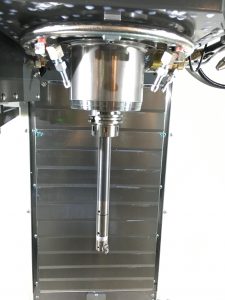
3. Barrel Extension: You should Loctite (or use something similar) the barrel extension into the upper receiver. This holds it in place all the way front to back in the upper receiver. Some would argue that this is not necessary, but it’s a simple yet effective way to squeeze out some more consistency. Remember, every little bit helps.
4. Gas Block: You want a gas block that does not add stress to the barrel. Clamp-on types that grab all the way around the barrel are an excellent choice. Other choices include gas blocks that are pinned on that wedge against the barrel or the slip-on type with set screws that push up from underneath. Each has its pros and cons based on what you want out of your rifle. I have never had an issue with slip-on gas blocks for the types of shooting that I do.
5. Free-Float Handguard: A rigid, free-float handguard makes a difference. Shooting with a thinner handguard will want to make the rifle jump when you shoot from a manufactured rest, bipod, or pack. Some companies sell custom handguards, like Gun Goddess. If you buy a custom handguard, make sure it well made and rigid. Don’t let your eye to athstetics ruin your accurcy with the wrong purchase.
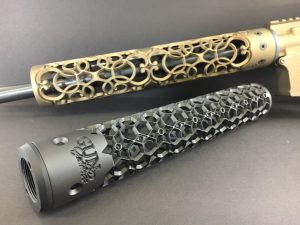
6. Quality: Use good parts from a reputable source and be wary of special low ball deals. All parts are not the same. Some are good, some fair, and some are flat out bad. Finding a good manufacturer is the key; good materials in, good products out. Also, don’t let fancy labels or colors fool you as it doesn’t necessarily mean the parts are better. Be wary of plated parts as well as the plating can change the dimensions and create some challenges when trying to fit them together.
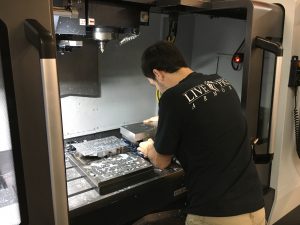
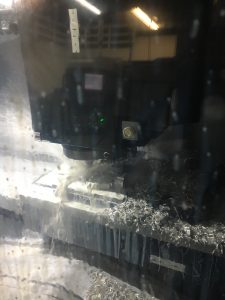
7. Upper to Lower Fit: A good upper/lower fit is important. You want the upper and lower to work as one. A sloppy upper and lower fit affect accuracy.
8. Quality Ammunition: Ammo is key. Unless you are a serious reloader, you should consider using quality factory brass ammunition. Remember that consistency is directly related to accuracy. Because each barrel is different and barrel harmonics tend to change with different types of ammunition, shoot several brands until you find the one that your barrel likes the best.
The Bottom Line
Understanding how barrel harmonics affects your accuracy creates the building blocks for you to shoot more accurately. Creating a weapons platform that you can be proud of is easy if you match your components with your intended use. A hunter may not need to shoot sub-Moa. On the other hand, a competitive shooter would. Any rifle will do its job as long as you do yours.
If you’d like more information or have any questions, feel free to email me at Murgado.a@livefreearmory.com. Please remember that Live Free Armory is here to help you whether you choose to buy from us or not. We believe that obtaining the right information should always be your first step.

Be the first to comment